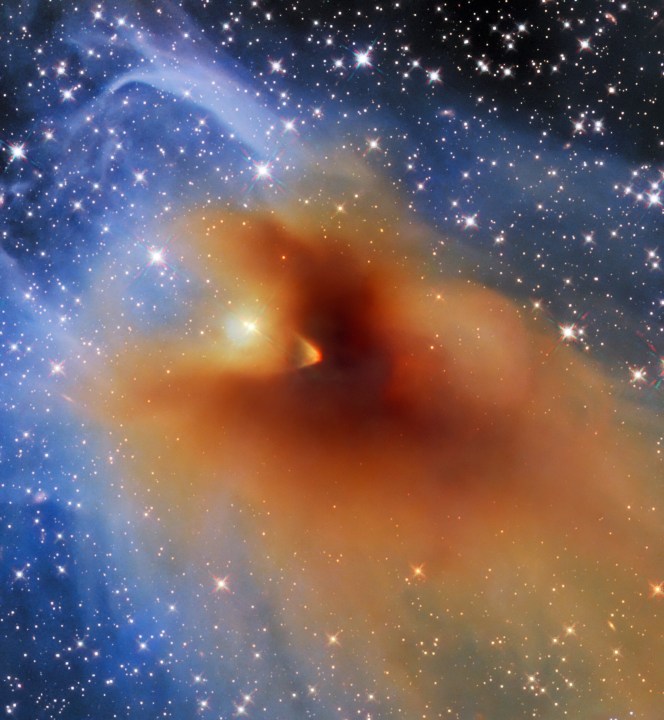This week’s image from the Hubble Space Telescope shows a beautiful cloud of dust and gas located in the constellation of Serpens. This cloud is a type of object called a dense core, with enough densely packed material that it could one day be the birthplace of a new star.
The object, called CB 130-3, makes an interesting companion to the protostar image recently shared from the James Webb Space Telescope. This Hubble image shows the earliest phase of star formation, in which dust and gas come together to form a core, while the Webb image shows the next phase of development in which the core is dense enough to attract more material via gravity and starts rotating and giving off jets.

You can’t see the core itself in the Hubble image, as it is deep within the cloud, but you can see how the cloud is not a uniform sphere but rather has patches that are either denser or less dense.
“As this image shows, the density of CB 130-3 isn’t constant; the outer edges of the cloud consist of only tenuous wisps, whereas at its core CB 130-3 blots out background light entirely,” Hubble scientists said. “The gas and dust making up CB 130-3 affect not only the brightness but also the apparent color of background stars, with stars toward the cloud’s center appearing redder than their counterparts at the outskirts of this image. Astronomers used Hubble to measure this reddening effect and chart out the density of CB 130-3, providing insights into the inner structure of this stellar nursery.”
The image was taken using Hubble’s Wide Field Camera 3 instrument, which looks at the visible light spectrum. This makes Hubble a useful companion to Webb, which looks in the infrared range. By looking at objects in a variety of different wavelengths, astronomers can pick out different physical features and see interior structures which would otherwise be invisible.
Editors' Recommendations
- James Webb captures the edge of the beautiful Horsehead Nebula
- Hubble captures the dramatic jets of a baby star
- See planets being born in new images from the Very Large Telescope
- This famous supernova remnant is hiding a secret
- Astronomers are figuring out what causes incredibly bright flashes in space




